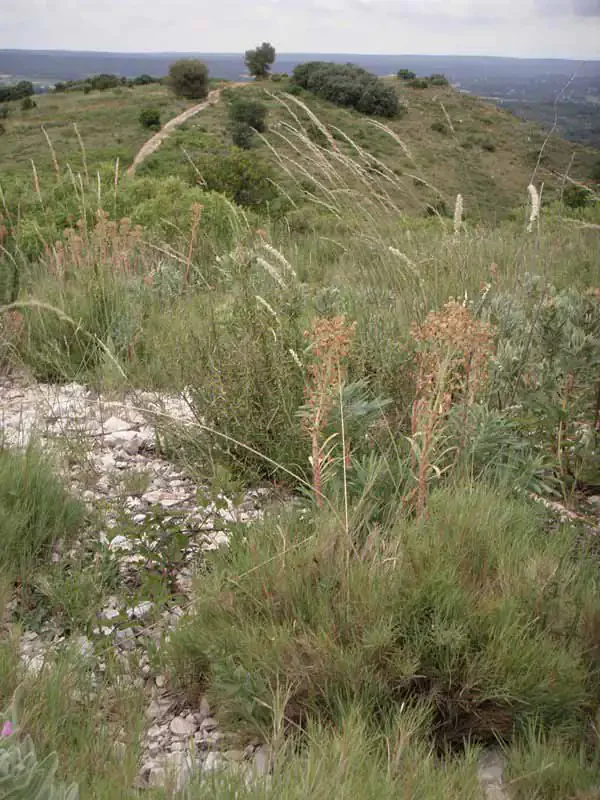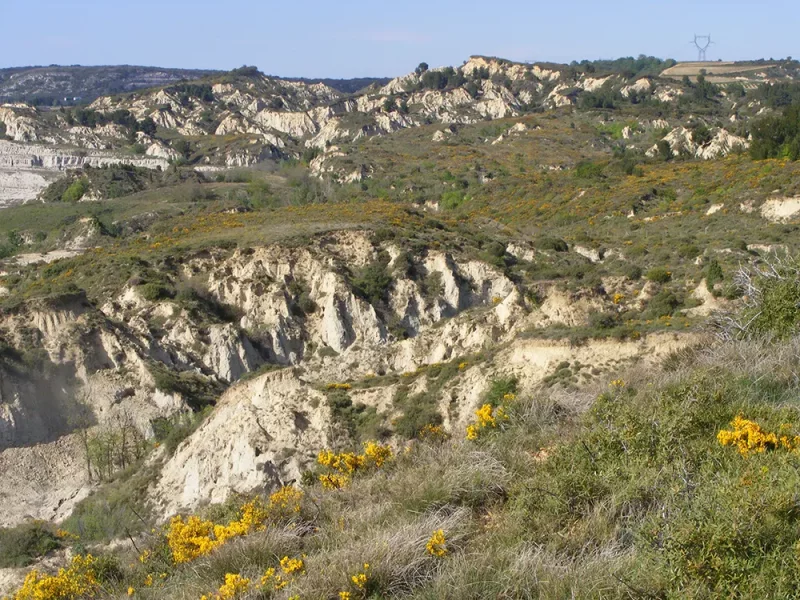Why is this environment-opening work necessary?
The Mediterranean open environments are major biodiversity reservoirs: they include many key habitats such as the Mediterranean false brome grass, considered prolific and original in terms of their flora, fauna and ecological functioning.
This grass is tightly bound to human actions due to agro-pastoral activities. These environments are therefore named “substeppic grasslands” because they originally were a grazing pathway and due to the vegetation growing there. The gradual shutdown of these environment, along with the decline of animal herding since the 1950’s within this territory has resulted in the grasslands naturally evolving towards a shrubland colonization (kermes oak, cistus), and finally forestry stages (green oak, white oak) that are far more commonplace in comparison.
The surfaces of the substeppic grasslands, grass dominated by the Mediterranean false brome and rather uncompetitive yearly species, have therefore shrinked of 94% in 50 years, covering today 100 ha, which is to say less than 1% of the total surface of the Natura 2000 sites, while the specific to the open environments have become deprived of their preferred habitats.
The substeppic grasslands are dry grass dominated by Mediterranean false brome and rather uncompetitive yearly species. They are considered as prolific and original environments in terms of their flora, fauna and ecological functioning.

